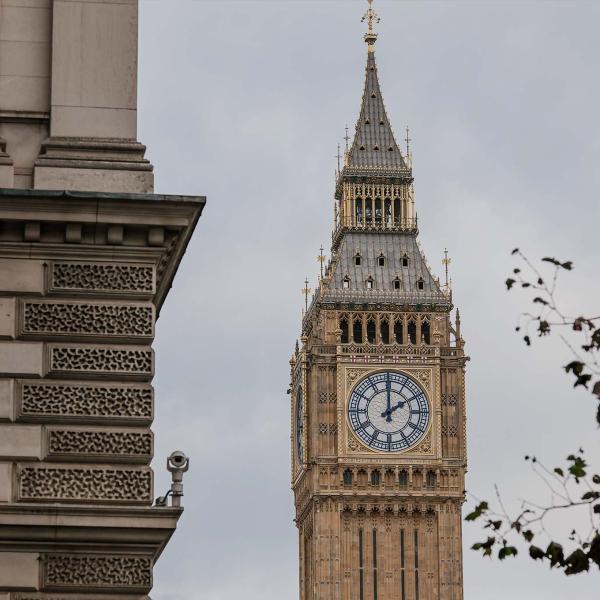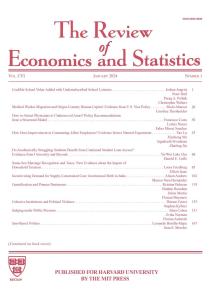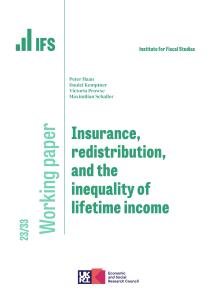On 6 April, we entered a new fiscal year: welcome to 2024–25. While this is an important date for many tax accountants and some other number-focused folk, most people are unlikely to mark – or indeed notice – the occasion.
One person who will have noticed the beginning of a new fiscal year is the Chancellor, Jeremy Hunt. The move into a new tax year means that the government forecast horizon rolls forward by a year. The Chancellor’s fiscal rule, which requires debt to be falling as a fraction of national income between the fourth and fifth years of the forecast, also rolls forward. Rather than needing to have debt falling between 2027–28 and 2028–29 (the previous fourth and fifth years of the forecast), the Chancellor now needs to be on course to have debt falling between 2028–29 and 2029–30.
Why might this be cause for celebration in the Hunt household? Because this mechanical rolling forward of the forecast is, all else equal, likely to increase the margin by which the Chancellor is meeting his fiscal rule – what’s often referred to as his ‘headroom’. In other words, if Jeremy Hunt was to hold a fiscal event tomorrow (or, say, just before an autumn general election), the rolling forward of the forecast means he’d likely have more ‘headroom’ than he did in the spring. That would be especially likely if he chose to flatter the forecast by pencilling in another year of extremely tight spending plans for 2029–30 (while, once again, refusing to specify where any spending cuts might fall).
At the Spring Budget on 6 March, held back in the heady days of 2023–24, Jeremy Hunt was on track to meet his rule – to have debt as a fraction of national income forecast to fall between 2027–28 (year 4) and 2028–29 (year 5) – with 0.3% of GDP, or £8.9 billion, to spare. Between the March 2023 and November 2023 forecasts, the rolling forward of the target year added around £5 billion to the Chancellor’s ‘headroom’. It’s difficult to say with any precision what the impact will be this time around, but we can be confident that it will make the Chancellor’s life easier. Our rough estimate is that it could add around £12 billion to the Chancellor’s ‘headroom’ (though this is highly uncertain – the eventual figure could end up smaller or larger – and could be offset by other moving parts of the forecast).
So, just by virtue of moving from 2023–24 into 2024–25, the Chancellor’s debt target becomes easier to meet. This is just one quirk of the way the target is designed (other undesirable features have been extensively discussed elsewhere). But because this debt target is the binding constraint on the government’s ability to increase spending or cut taxes – and because the Shadow Chancellor, Rachel Reeves, has promised to keep the same target if she becomes Chancellor – it is a significant one. It means that if Jeremy Hunt holds an additional pre-election fiscal event, he might be able to announce something like £12 billion of tax cuts (enough for a third 2p cut to the main rate of National Insurance) or spending increases and remain on track to meet the letter of his fiscal rules. Or, if he chooses not to hold a pre-election fiscal event, it would imply more ‘headroom’ for Rachel Reeves in the event of a Labour election victory.
This is, of course, a silly way to manage the nation’s finances. It reflects one of the key downsides of a five-year rolling target: you merely have to promise to get debt falling in five years’ time, and never actually have to get debt falling. But it could nonetheless be an appealing prospect to a Chancellor looking to hand out further pre-election sweeteners.
Stepping back and ignoring the politics that come with election years, this slight easing of the government’s self-imposed fiscal constraints still leaves limited room for manoeuvre. Whoever is Chancellor come the autumn faces a daunting set of choices when it comes to tax and spending.
To illustrate these, and to highlight some of the key trade-offs, we’ve worked in partnership with Nesta as part of its UK Options 2040 project to build an interactive online tool that allows you to ‘Be the Chancellor’. You can make changes to tax and spending policy, adjust assumptions about economic growth and interest rates, and see the effects on borrowing and debt in 2029–30 (the year in which the two main parties’ key fiscal rule requires debt to be falling).
Upon becoming Chancellor – congratulations on your appointment, by the way – you’ll see that you’ve inherited plans that imply a budget deficit of around £40 billion in 2029–30. Under the latest forecasts from the Office for Budget Responsibility, that would be sufficiently low to have debt falling as a fraction of national income at the end of the forecast period. (Note that for debt to be classified as ‘falling’, the tool requires it to be falling by at least 0.5% of GDP in 2029–30: given the uncertainties involved, if it’s falling or rising by less than that, it’s treated as being ‘stable’). So far, so good.
But that’s all predicated on you implementing the tax and spending plans you’ve inherited from the current government. It assumes that you’ll keep all income tax thresholds frozen in cash terms up to 2027–28, for instance. If you unfreeze those, at a cost of £11 billion, debt will no longer be falling, merely stable. It also assumes that you’ll allow the ‘temporary’ 5p reduction in rates of fuel duties to expire next March and that you’ll be the first Chancellor since 2011 to raise fuel duties in line with RPI inflation. If you follow your predecessors and keep fuel duties frozen at current levels, it will cost you £6 billion in 2029–30.
The forecast also assumes that you’ll stick to the tight spending plans pencilled in by the current government for after the election. If you want to avoid cutting public investment in real terms, you’ll have to spend an extra £18 billion. Again, that would be enough to mean that debt is no longer on a falling path – and would still require cuts to some public services. Don’t like the sound of those public service cuts? You’ll need to find another £21 billion from somewhere to avoid those. Carry on like this, Chancellor, and you’ll put debt on an ever-rising path, not only breaching the fiscal rules you inherited but potentially increasing risks to the long-term sustainability of the public finances.
These are the sorts of choices and trade-offs awaiting the next government. There are lots of options, but it’s going to be tough. Don’t believe us? Have a go at being the Chancellor and see for yourself.









